Air Force Vietnam and Bosnian Wars Chicago, IL Flight date: 06/14/23
By Lauren Jones, Honor Flight Chicago Veteran Interview Volunteer
Thomas (Tom) James Honzik was born on September 23, 1952. He grew up in the Roseland neighborhood of Chicago with his parents and older brother. His father died when Tom was only 12, which was a pivotal moment in his life. When his mother worked at JCPenney at night, Tom often cooked for himself and his brother. Although she only earned her eighth-grade diploma, she would go on to see both of her boys earn their master’s degrees.
Tom’s interest in military life started young and led to more than three decades of service. His passion for adventure, airplanes, travel, an infectious sense of humor, and dedication to service led him down an interesting path in the military that deserves both our appreciation and gratitude.
He joined the Air Force in 1970, served in the Vietnam and Bosnian Wars, and retired in 2001 as a Major, Civil Affairs, with the Army. His military career led him to work in many countries, including Vietnam, Laos, Germany, Bosnia, Croatia, Latvia, the Philippines, and Thailand. See the end of this profile for a complete list of Tom’s extensive decorations and badges.
Tom learned about the military during Boy Scouts. Someone told him he would be treated well and get some training. Coming from humble beginnings, the idea of having multiple pairs of shoes was appealing to Tom.
He reached the rank of Eagle Scout and participated in his high school’s ROTC program, where he earned the rank of lieutenant. His ROTC training earned him the rank of E-2 when he entered the Air Force in September 1970 after graduating from Fenger High School.
Tom thought this was great and laughed when he remembered thinking: “Are you kidding me? I make more money, assigned easier details, not messed with by the Sergeants, all because of my ROTC stripe AND getting three pairs of shoes?”
He was 17 when he reported to Lackland Air Force Base in San Antonio for basic training. And he loved it. “I got pretty easy details and paid more because of the stripe. I was only 17, but when you walked into the bowling alley with the stripe on, they didn’t ask you for an ID,” he laughs. “So, I’d sneak off and drink beers!”
Tom decided to join the Air Force because they promised him flight status. “I wanted to go into the Coast Guard, but they couldn’t promise me anything. So that was it.”
He completed weapons mechanics school at Lowry Air Force Base and headed to England Air Force Base, LA, to help train Vietnamese Airmen on the A37B aircraft systems. Tom volunteered for assignment as a gunner on AC-119K gunships in Vietnam. He recalled what it was like to serve as a gunner: “You actually stood in the open door. The door was taken off and you had a little strap holding you onto your parachute harness. And you’re just standing there in an open window at 5,000 feet.” When asked if he was scared, he replied that he was just there to do his job.
He reported to the 18th Special Operation Squadron in April 1971 and flew missions from the Nakhon Phanom Royal Thai Air Force Base (NKP) and Bien Hoa during August and October. He was transferred to Da Nang in November 1972 and was on the second to the last military aircraft to land before the war ended in 1973 at Da Nang.
Tom earned his nickname Lucky during a close call one night while serving as a gunner on the trail. Anti-aircraft artillery passed extremely close to the aircraft, and Tom called for the brakes to help his team avoid being hit. He thought he had made a mistake but was told, “That was the greatest call I’ve ever seen!” by the pilot. Once Tom admitted that he was just lucky, the nickname stuck, and “Lucky” was ordered to join other flight crews as a scanner several times after that if they had a real hard mission.
One of his most exciting AC-119K missions as a gunner occurred in October 1972 when he was scanning for anti-aircraft artillery. He was looking toward the back of the plane when a cigarette butt discarded by the pilot hit a window and created a spark. Tom jumped back but quickly realized that the spark was from the cigarette. However, had he not turned his head toward the spark, he would have missed seeing that a Communist gunner on the ground had fired a SAM-7 surface-to-air missile at his plane.
“I yelled SAM! SAM! and fired a decoy while the pilot broke hard toward the SAM. I suddenly found myself staring straight at the ground.
“I had never seen an AC-119K bank as fast or as far,” he recalled. “I heard the explosion and thought we were hit, but the copilot reported the SAM had locked onto my decoy and hit that instead of our gunship.”
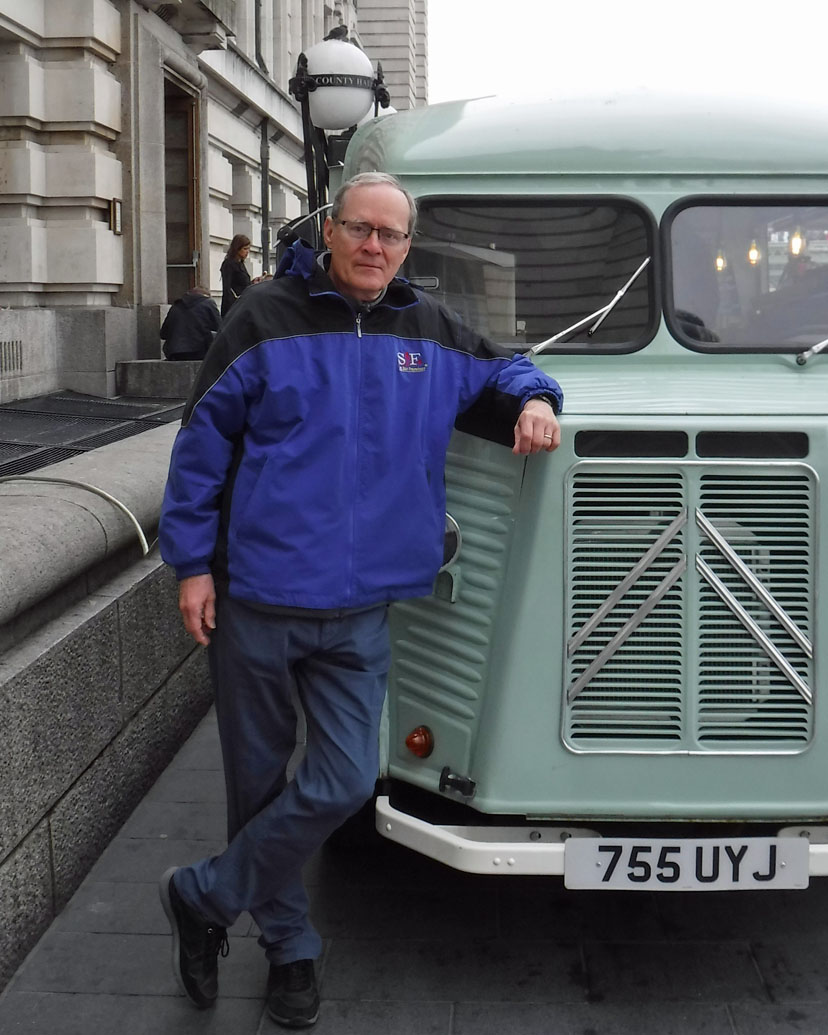
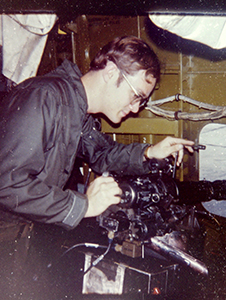
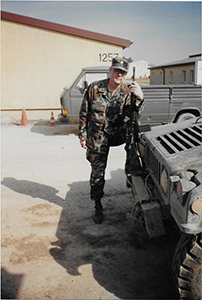
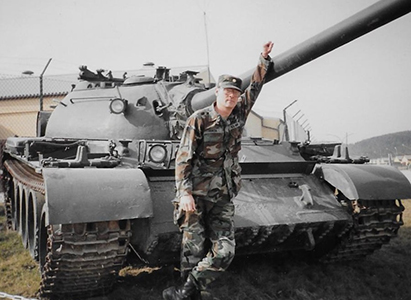

In November 1972, Tom was nominated for extraordinary aviation achievement as a gunner in operations against communist forces. During the operation, his aircraft Singer 40 sighted five communist trucks. His gunship destroyed two of the five trucks and damaged the other three. Communist ground gunners fired 100 rounds of 20mm and 100 rounds of 37mm anti-aircraft artillery at his aircraft.
Tom skillfully advised the aircraft commander on evasive maneuvers that allowed the aircraft commander to not only evade the high volume of anti-aircraft fire but to stay on target long enough to damage and destroy the enemy targets. He ignored the anti-aircraft fire and remained at his station to give his crew the best opportunity to safely complete its mission and return to base.
When he thinks about his time as a gunner in the AC-119K, several things come to mind. The first was a concern for his parachute since American troops did not typically get the new equipment. “Shortly after I began flying, I inspected my parachute and discovered a tag that read “CONDEMNED”. When I reported it to the equipment specialist, he looked at the tag and told me I was lucky because I had one of the newer “CONDEMNED” chutes.” Tom still needs to be convinced that he was lucky to have a newer condemned chute. All of the new good equipment was given to the Vietnamese.
He also remembers that miniguns were challenging to maintain because the Air Force had few spare parts and they were hard to get. So they were forced to swap parts from one gun to another, and, on occasion, Tom went to a local merchant in the center of Da Nang, who always had parts for the miniguns.
After Vietnam, he was assigned to B-52s loading nuclear weapons in the United States and Guam. He earned the Missileman Badge working on B52D and H models. He left active duty in February 1974, entering the Illinois Air National Guard for the 169th TAC squad, where he served as a Weapons Technician for two years. He then moved on to the Illinois Army National Guard as a Weapons Mechanic for the 47th Avn Battalion for three years. In 1979, he graduated from Infantry Officer Candidate School and was commissioned as a 2nd Lieutenant in the Illinois Army National Guard. His first assignment was as a Platoon Leader for the 33 Infantry Brigade. He retired as a Major in January 2001 after a variety of interesting assignments.
Most of his time as an Army Officer was spent as a Senior Nuclear, Biological, Chemical Warfare Specialist. His major assignment was with the 434th Field Artillery Brigade.




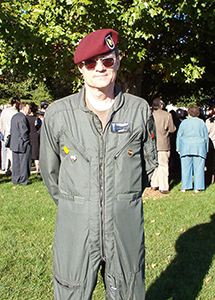
While in the Air Force, Tom completed college courses and earned a master’s degree in geography and a bachelor’s degree in secondary education from Chicago State University. He also went to Daley College for a degree in accounting.
He started working in accounting at 28 after beginning his service in the US Army Reserves. He also had his own small business for about ten years, flying as a pilot out of Midway. He would charter plans from local owners and pay them cash to use their planes. He would get hired by people needing a small plane to get somewhere or go on a tour. Tom didn’t care where they went as long as they were paying.
In 1995, Tom was one of the first Americans sent to fight in Bosnia with the 308th Civil Affairs Brigade (Airborne). He also provided Civil Affairs assistance in Vukovar and set up a medical clinic.
After returning from Bosnia as a Civil Affairs Officer with the US Army Reserves in 1996, he was sent to Latvia with a team to try and convince the country’s leaders to join NATO. He was able to communicate in Russian with Latvian military personnel , and there were interpreters to help. “I was only there for 10 days,” he recalled. “We wanted to rotate people in and out from the civil affairs unit so they could see lots of guys. We tipped the interpreters really well and showed them we were nice guys. Get Latvians on our side after the Soviet Union.”
Tom met his wife, Debra, in 1994. They were set up by a mutual friend and had an instant connection. “I knew the night I met him that I would marry this man,” Debra stated. She appreciated his passion for adventure and travel and knew she’d found the right person to “share life with.” The couple was married within four months of meeting each other.
About a year after being married, at 41 and 38, Tom and Debra bought a new house in New Lenox, IL. They’d just moved in when Tom left to go to Fort Bragg in North Carolina for a week for the Army Reserves. He only had a week’s worth of clothes, but Debra later read in a local paper that he would actually be gone for six months. He ended up only being gone for three months, but it wasn’t an easy start to their new home together.
These days, Tom works part-time as Vice President and Senior Executive Chef for the Center Plate Development Company. COVID-19 downtime found him rebuilding stairs in his house and replacing the laundry room sink, among other upgrades. He also volunteered through the Will County Health Department to check people in for their vaccinations. Tom is a dedicated volunteer, often at food pantries, and still feels strongly about giving back.
He also recently resurrected his interest in guitars, which he first learned how to play from a friend in Vietnam. His collection of four guitars includes one from his father-in-law, which he refurbished, and three that he built after watching YouTube videos. He practices every night and often when his wife leaves so he doesn’t have to hear that he’s being too loud. He considers himself an Al Kabong in the guitar world, although others consider him a Lex Luther of guitars since his building skills make him an “evil genius.”
Tom and Debra take two international trips a year, most recently to Prague, and show no signs of slowing down anytime soon. Tom had triple bypass surgery, attributed to his exposure to agent orange. He stays active, working out daily to ensure he can keep going on international adventures and flexing his bilingual skills in Russian, German, French, and Spanish.
He hasn’t been to Washington, DC, in over 20 years and is looking forward to his upcoming trip. He has a few particular names to look for on the Vietnam Veterans Memorial wall.
Thank you for your service, Tom! We hope you enjoy your well-earned and much-deserved Honor Flight experience!
US Decorations and Badges
- Air Medal
- Army Commendation Medal
- Air Force Good Conduct Medal
- Army Reserve Component Achievement Medal
- National Defense Service Medal
- Vietnam Campaign Medal (2)
- Armed Forces Reserve Medal
- Army Service Ribbon
- Overseas Training Ribbon
- Armed Forces Services Medal
- Air Force Outstanding Unit Award
- NATO Medal, Bosnia
- Republic of Vietnam Campaign Medal
- Republic of Vietnam Gallantry
- Aircraft Combat Members Badge Gunner
- Missileman Badge USAF – Nuclear Weapons
- Senior Mechanic Badge USAF


